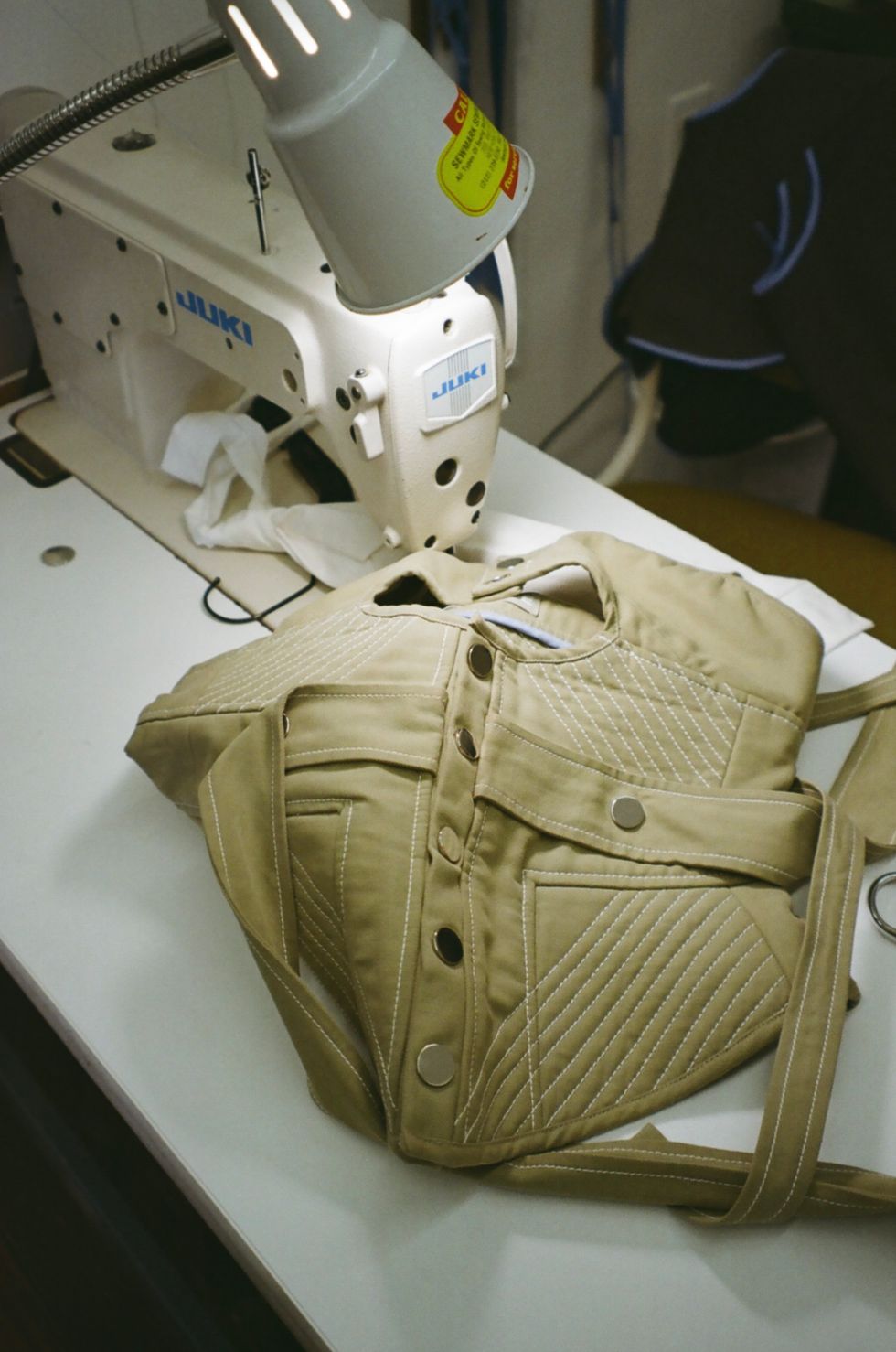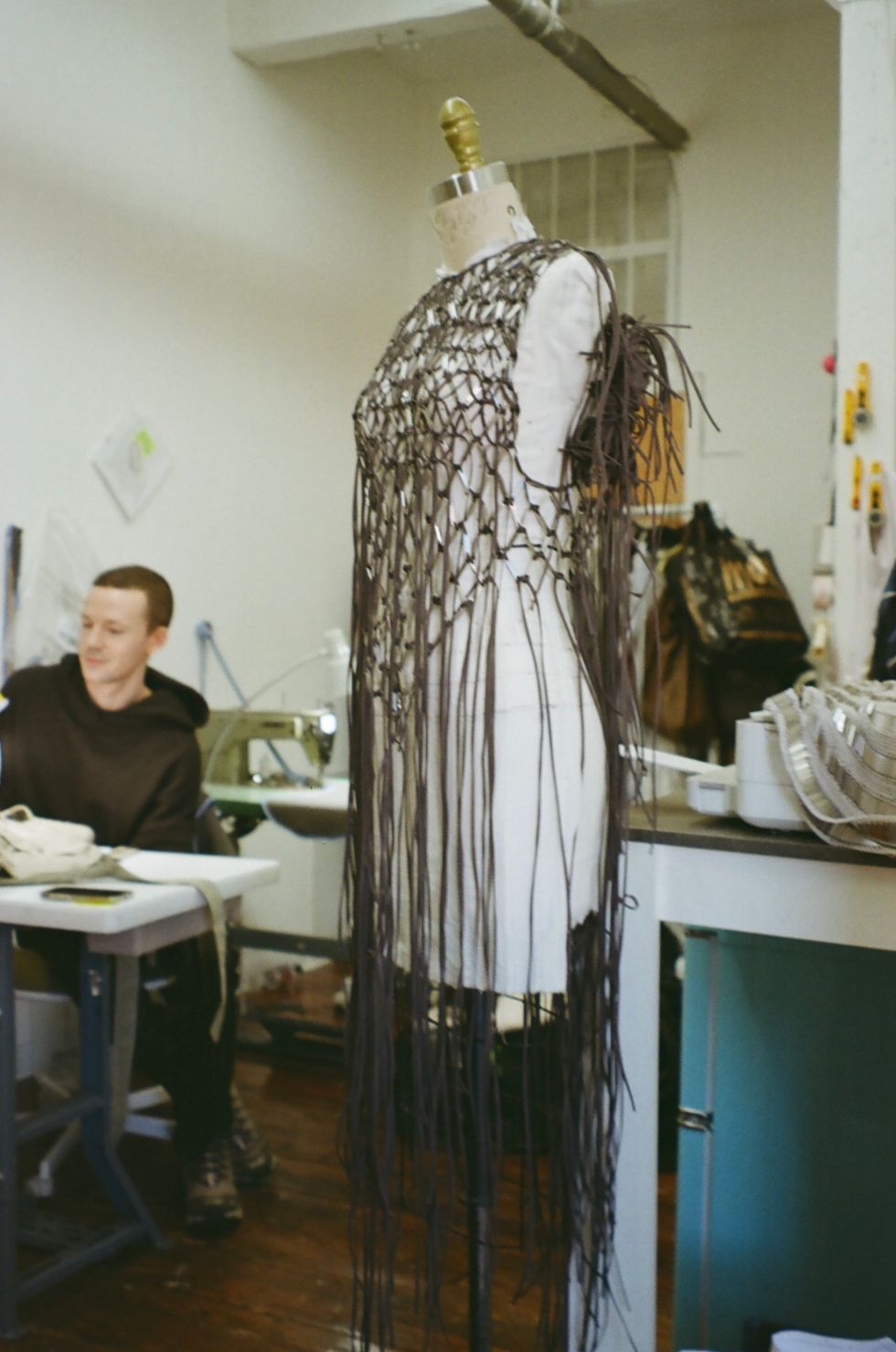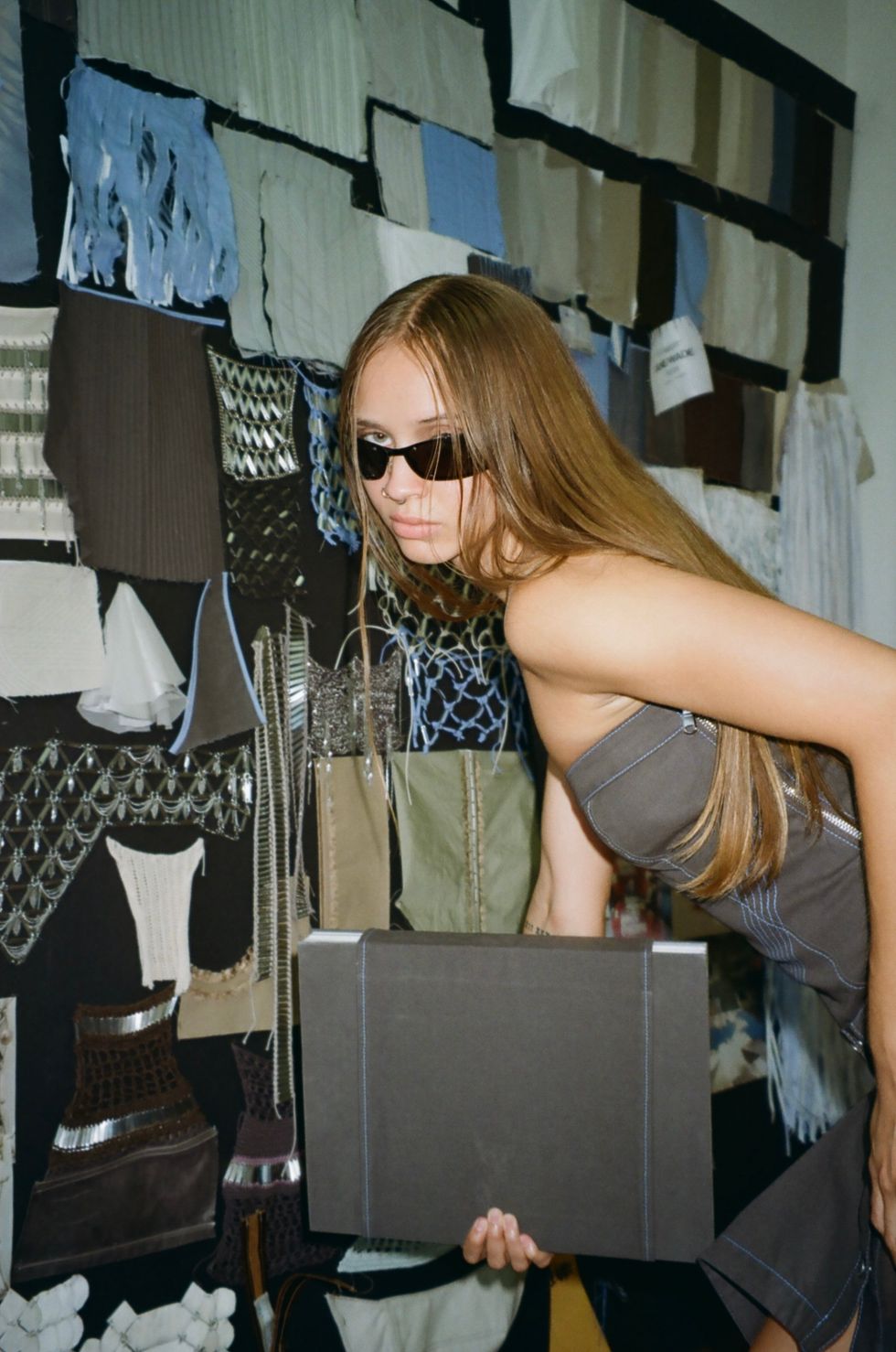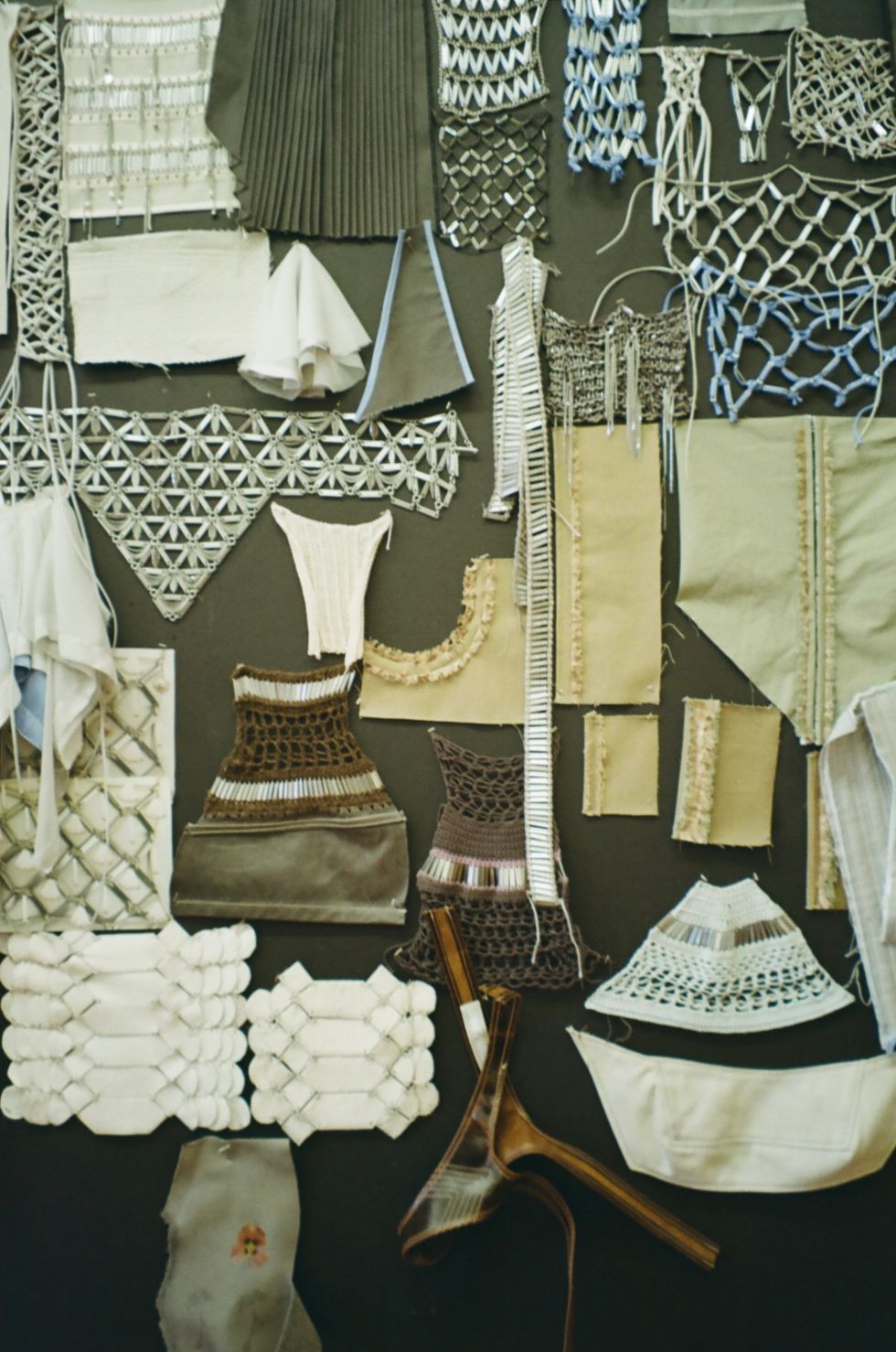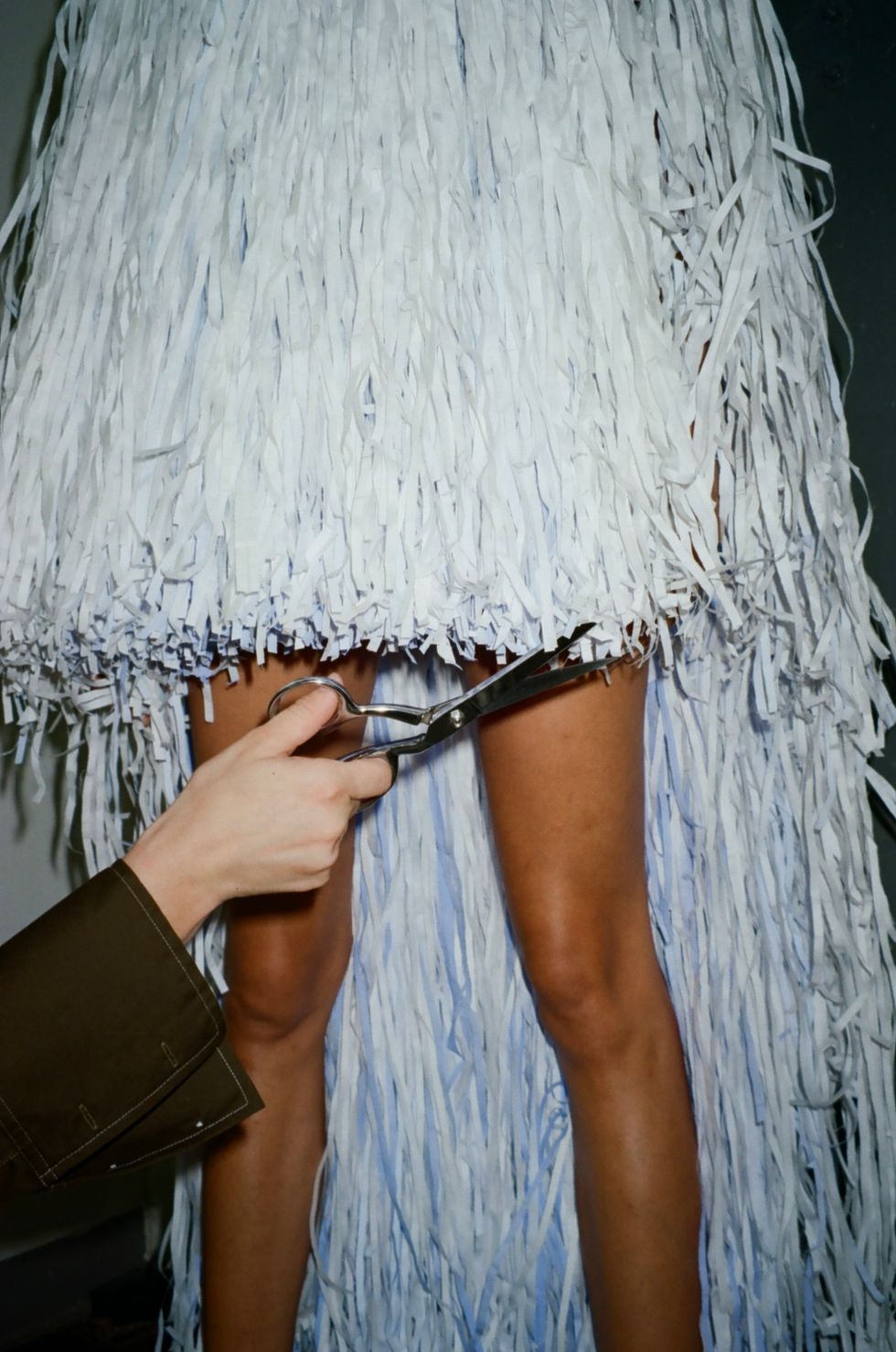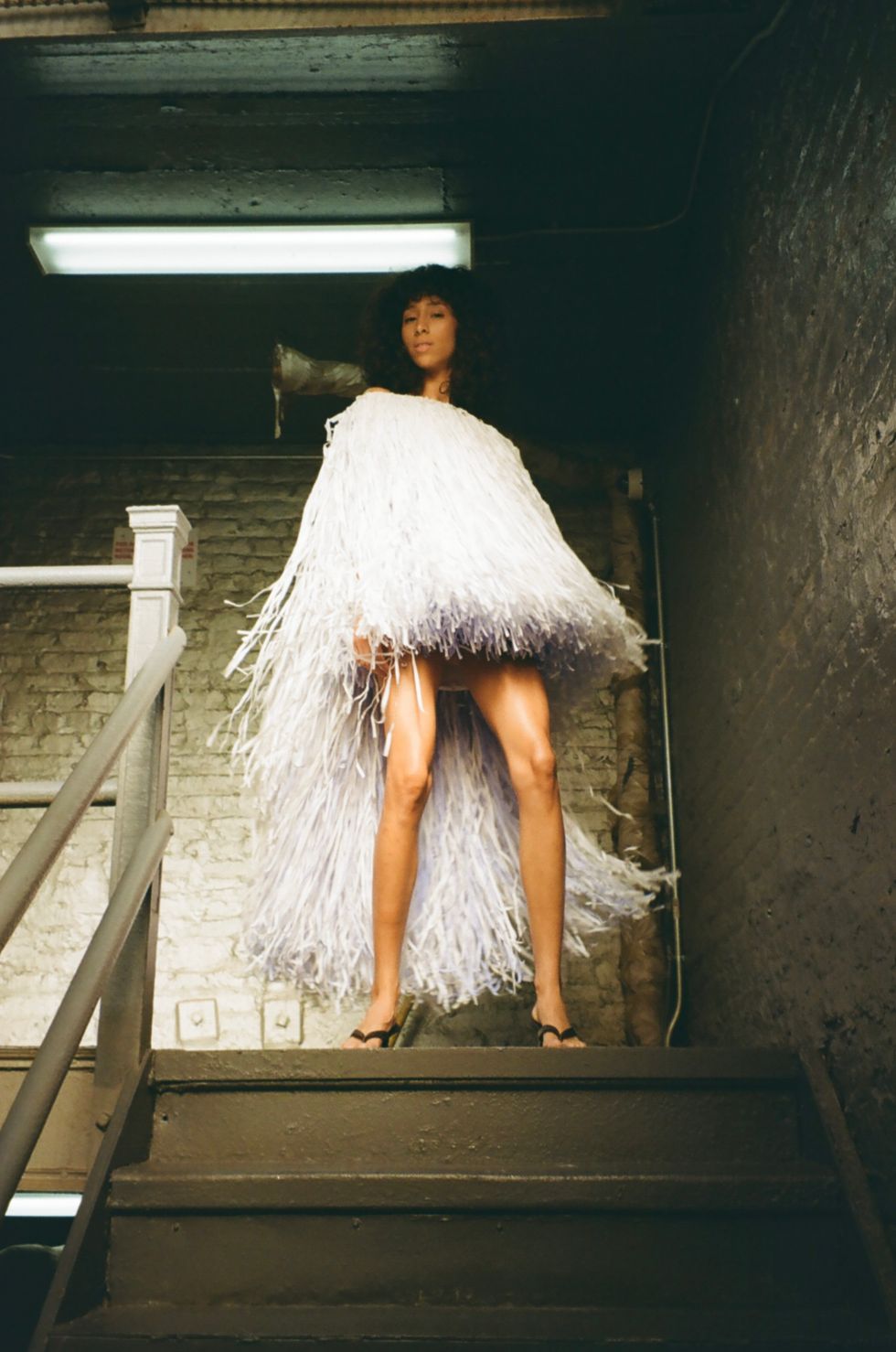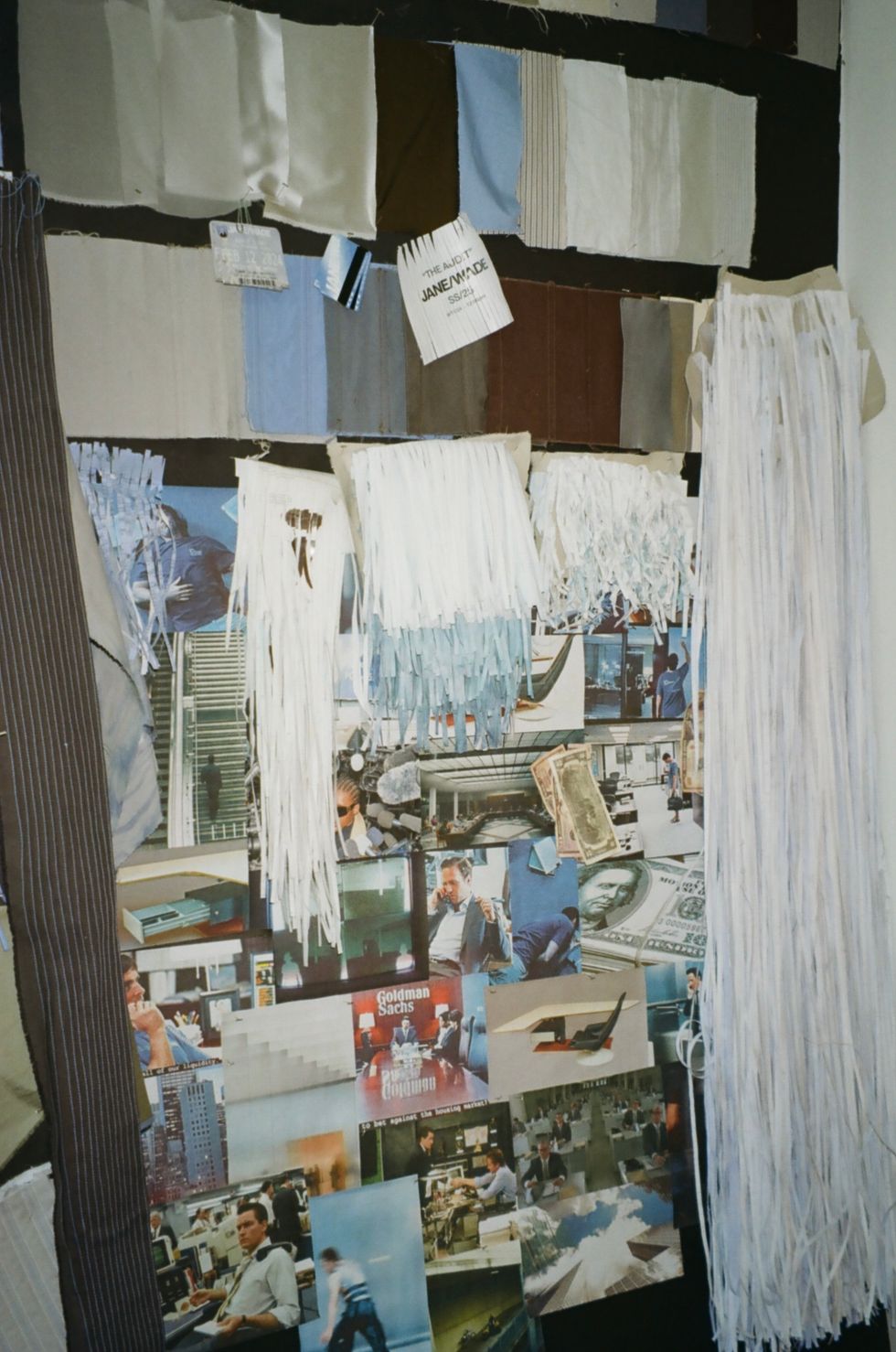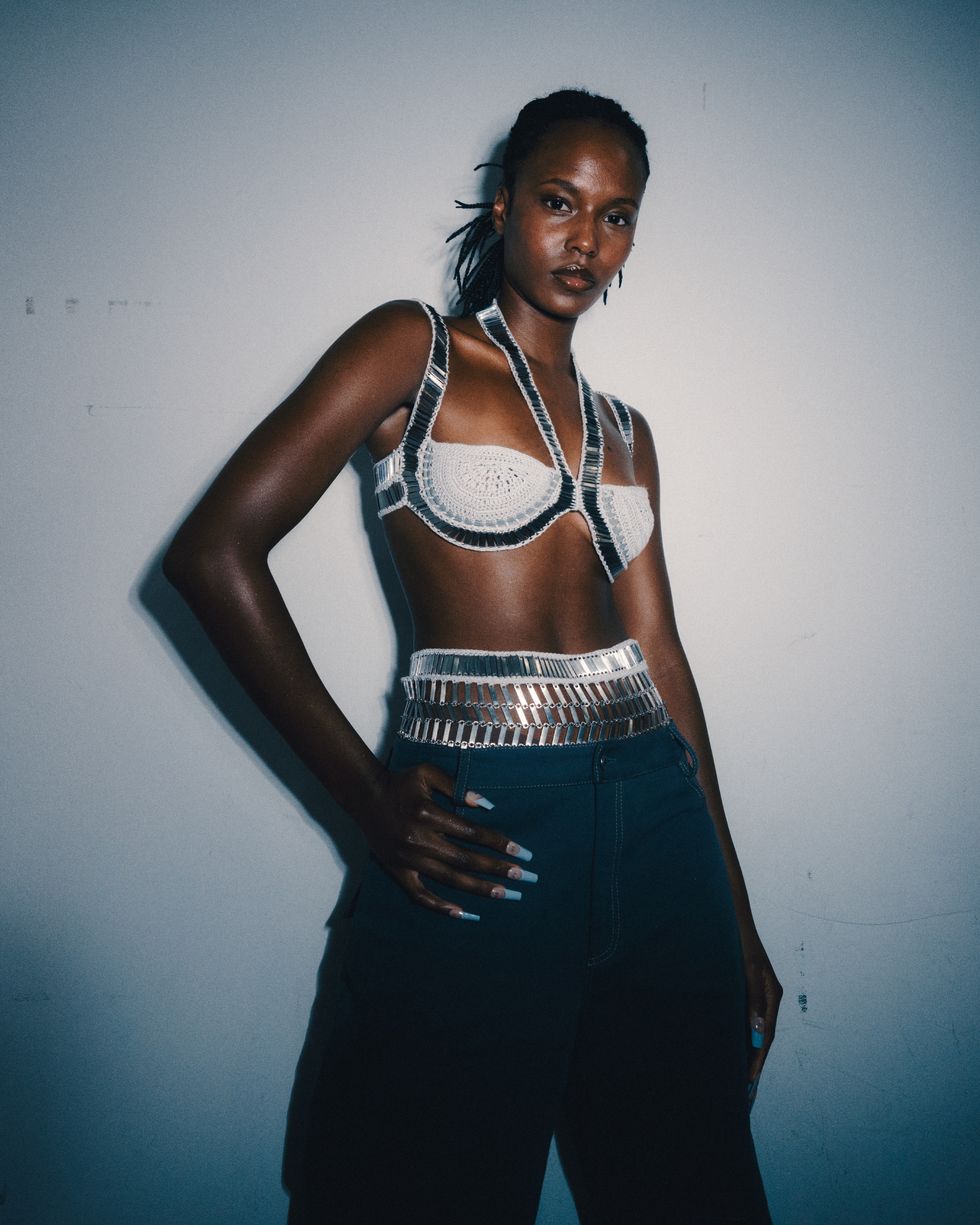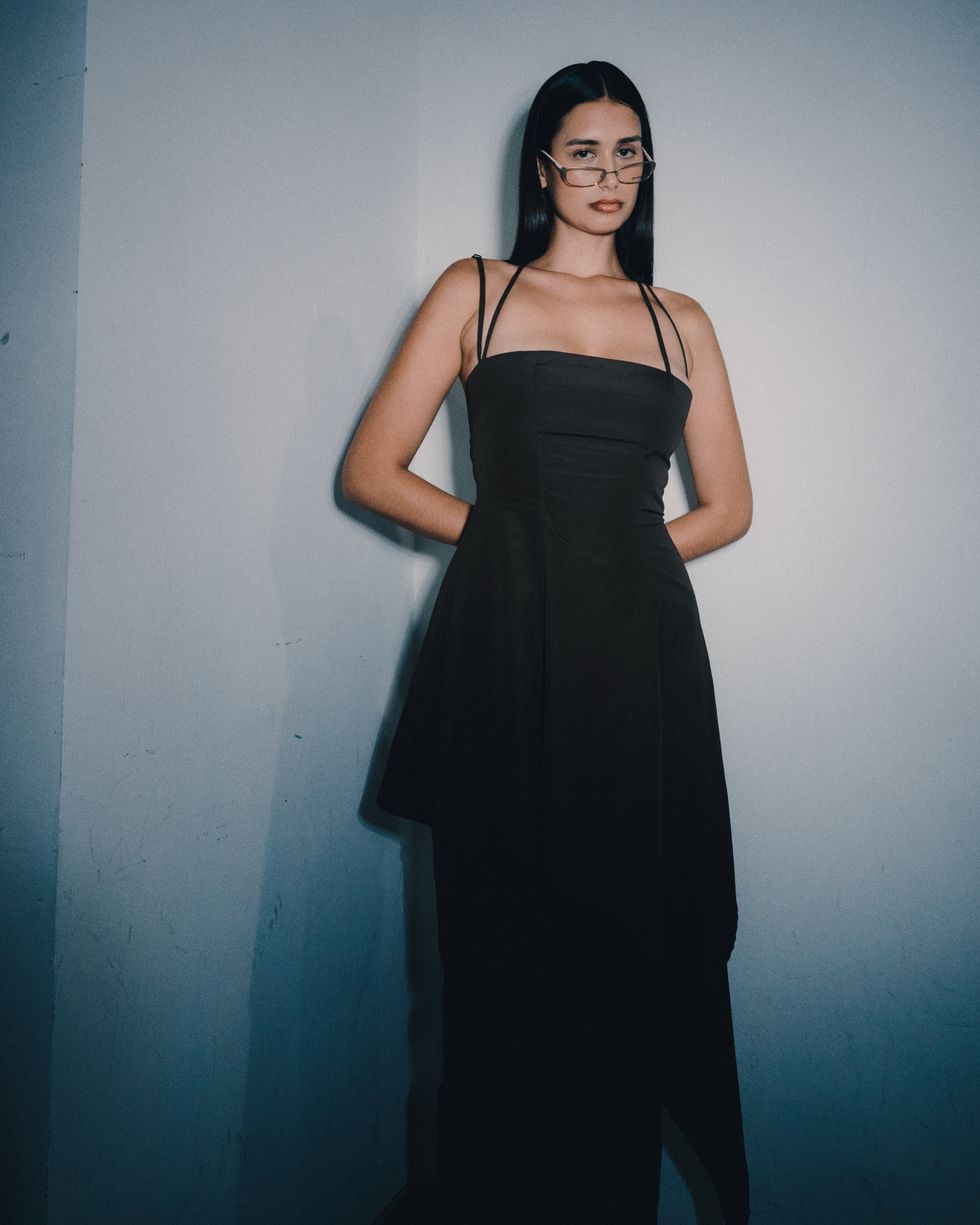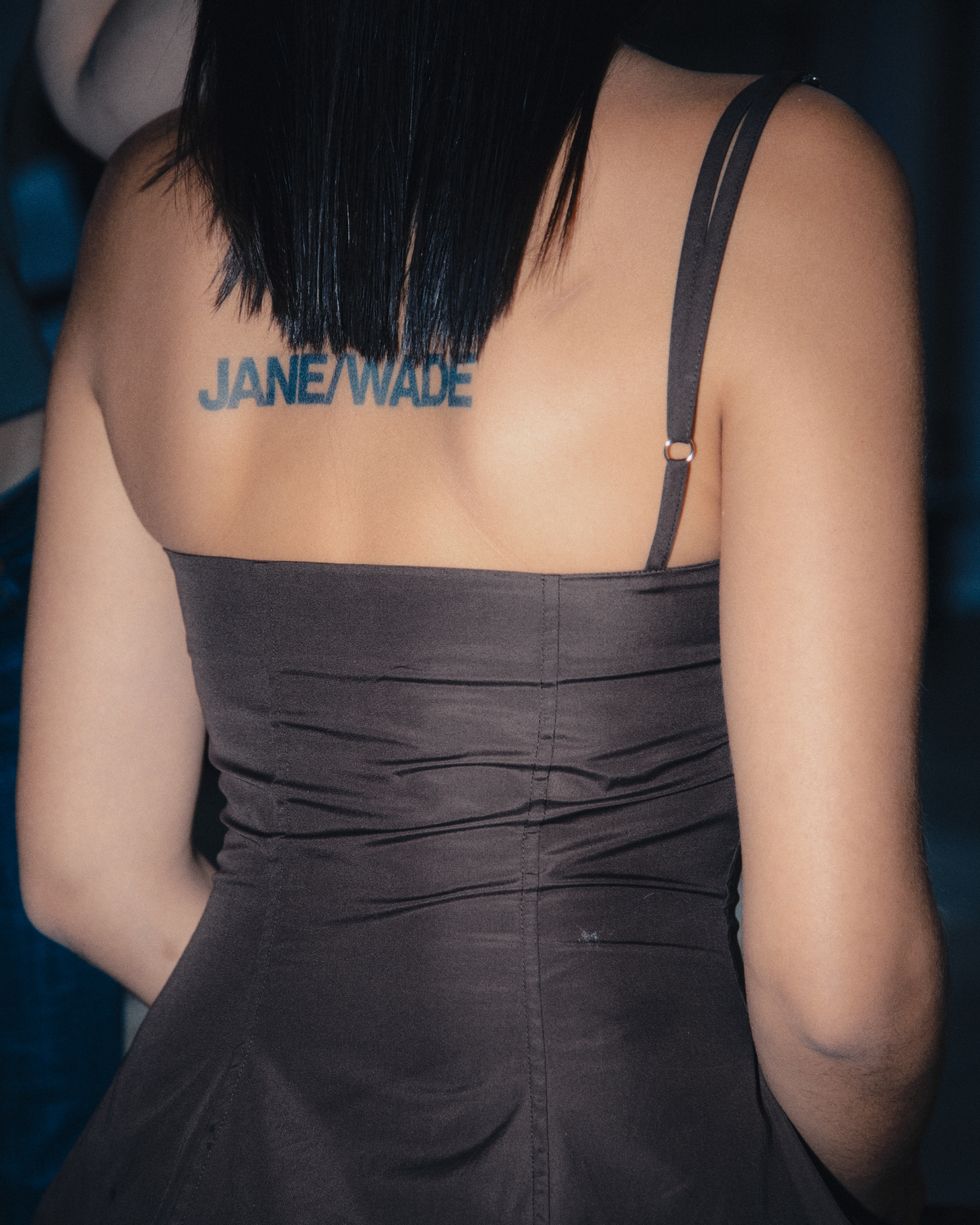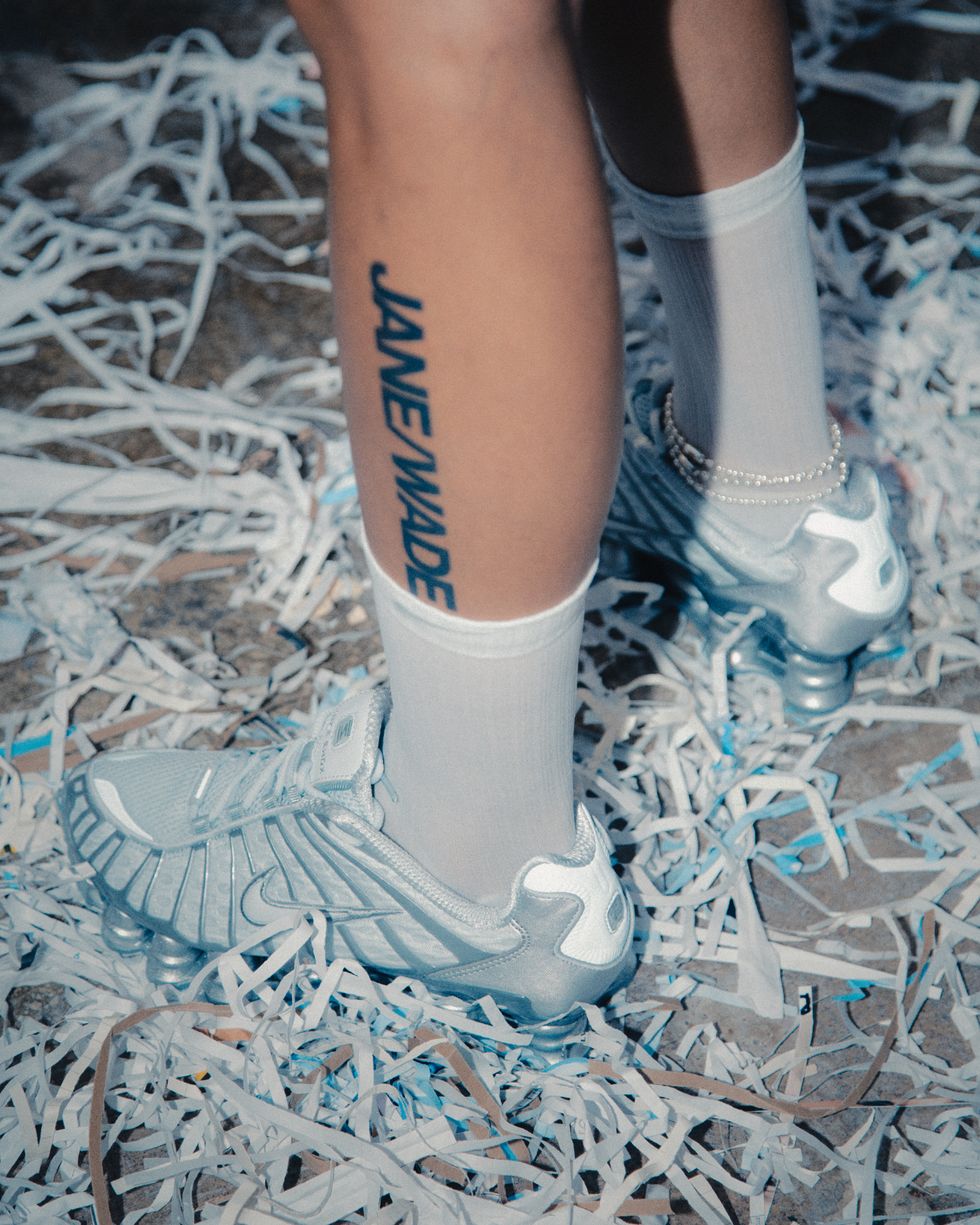
Jane Wade Killed Her Ego
Sep 17, 2024
In an industry like fashion, it’s easy to attach your self-worth to your job. Jane Wade knows this well.
Originally from Portland, Wade studied fashion at the Academy of Art University in San Francisco and at Central Saint Martins in London. Following graduation, she landed a design internship at Alexander Wang, when the brand was at its hottest, and it was the first big taste of her own pride. “That rush that you get from someone's excitement about what you do, it really does cement and attach to your ego,” she tells PAPER. “When I left that job, I was like, Who am I without this job? If I'm not attached to someone else's vision, am I even important? Do I even matter?"
After working with Wang, Wade began designing with Danielle Frankel and then Elena Velez, but she admits that it was a daily struggle to reserve energy for herself and not attach her worth to someone else's vision. Burnt out from working under others, she knew the only escape was to prioritize herself — so she launched her namesake brand in 2022.
Wade has spent some time with her small team and her publicist, Anthony Brooks, setting specific goals for the brand, strategizing its evolution and setting up checkpoints along the way, and she’s already checking off boxes that she didn’t anticipate accomplishing so quickly. One of those was to be a finalist in the CFDA/Vogue Fashion Fund.
In February, the brand presented its first runway on the official CFDA calendar with its Fall 2024 collection called “Out of Office.” During New York Fashion Week this September, one month before the Fashion Fund winner would be announced, it presented its Spring 2025 collection, “The Audit,” on Little 12th Street in the Meatpacking District. For Wade, every season is a new chapter, but this time around, she was laser-focused on cleaning up the brand codes and identity.
The designer knows her way around a dress shirt, but it's not just about rethinking office staples. Rather, she’s interested in workwear as a whole, as garments that are performing for us, whether white collar, blue collar or even athletic. Above all, she’s thinking about how our work can become a pillar of our identity.
For Spring 2025, Wade was drawn to the corporate elite world of finance. By deconstructing power suits, dress shirts and denim, and turning them into corsets and petticoats, the collection became a critique of unchecked greed under capitalism: Are we willing to give up our moral standards to ourselves and our communities to make a buck? Is it fair that the one percent can use loopholes in our legal system to hoard wealth?
It’s ironic to raise this topic when said corporations are sponsoring her show, but these days, for better or for worse, it’s necessary for emerging brands like Jane Wade to leverage these kinds of partnerships if they are to survive, and thrive, at all. “Heroes like Nike and Inkbox and some of our other partners are really doing their part to give back in this way, even CFDA and Vogue,” Wade says. “It was perfect timing to discuss this narrative, because not every major American corporation is doing that.”
In Wade’s opinion, it’s all about the right partnerships, because ultimately, fashion is resource-driven. If you don’t have the fabric, you can’t make clothes, and if you don’t have funding, you can’t start and sustain a brand. “You have to draw a boundary internally with yourself and ask, ‘Is this partnership in alignment with what I'm trying to say, not only with my values and my morals, but also my narrative?’” Nike makes sense: It’s literally a fashion brand, but also fits into the workwear DNA of Jane Wade. Inkbox, the semi-permanent tattoo startup who was also a partner, did, too. “With Inkbox, we were talking about temporary tattoos and real tattoos and how professionalism is developing in the workplace so even a partnership like that makes perfect sense within the narrative," Wade says.
Still, how Wade has achieved so much so quickly simply cannot be bought. The requisite determination and hard work aside, she credits her expedited success to the community she’s fostered in the industry since she first moved to New York. While working full-time at Alexander Wang on the weekdays, she also interned with Martine Ali on the weekends. Wang might have fueled her ego, but Ali made her feel supported through every phase of her career. When Wade told her that she wanted to launch her own brand, she was one of the few people that encouraged her and believed in her success. “She’s always shared her resources with me,” Wade says. “That's the kind of community that I want to be a part of, and how I see New York fashion existing now: people working together to get where we need to go.”
One of the hot fashion week topics this time around was the state of New York fashion. Where are all the big brands on the schedule? Is New York Fashion Week dead? Wade thinks that it’s just evolving and that the archaic ways in fashion, with its cattiness and gatekeeping, are finally dying, and the emerging brands are lighting the way. “I look at these huge houses, and I'm like, Where is the art? Where's the energy? Where's the community? All the brands that really have their finger on the pulse of their community are the most relevant and the most important now. Our generation is doing such a good job of changing the fundamentals of how we all work together, and the community effort is what makes it all so exciting, seeing each other doing great things.”
It's about being relatable, too. Even the questions she raises with her latest collection about wealth and greed are ones that affect us all. It may be that, more than ever, she feels the pressure to appease the larger foundations like the CFDA to get where she wants to be, but it’s a good pressure, because it’s pushed her to even consider the “why” of it all, which she and her team ask at every collection’s conception. “At the end of the day, art without a 'why' is just something beautiful,” she says. “In order for art to push beyond the narrative, beyond us, even beyond our community, it has to be discussing something that's happening right now in our climate of culture.” Even if it’s scary for her and rocks the boat to discuss it, Wade is a designer who can’t help but discuss topics that feel important.
It doesn’t hurt, though, that the actual, physical clothes are good, as both cohesive collections within themselves and as parts that comprise the entire Jane Wade universe. With each season, workwear, utilitarian and modular details are built upon or even dropped, like Salomon’s cameo for Fall 2024 that introduced high-performance active and skiwear into the mix. “The theme, in and of itself, becomes a fun way to layer in new identities, new codes, new concepts,” she explains. “That's why it's so fun to really develop the narrative and the concept, because it's a way to combine new styles, new details, new styling, into the overarching through-lines so that the identity stays in an even keel across all collections.”
The backbone of Jane Wade — the person and the brand — can’t be seen on the runway. Questioning what identity means in the workplace mirrors her own internal relationship with her ego and how it relates to other people. “I don't think I'm the most talented designer in New York,” she says. “I work hard, I have a vision, and I love the clothes that I make. But I think that what has expedited it so much is bare basics: being kind, thoughtful, generous and giving as much as I receive.”
Stepping into the show venue every season — watching the set go up, hearing the audio get built, watching hair, makeup and styling happen — is a reminder of how many people she leans on to get the job done. “It’s keeping that ego in check, keeping myself in check and reminding myself of every single person that's contributed.”
If you asked her in 2022 why she even wanted to have a brand, Wade probably would’ve had a selfish answer. But now she says it’s not really about her; she’s fighting for her people, like Alicia, her assistant designer who also walks in all of her shows. She feels responsible for giving interns a launching pad to grow in their creative capacity and pushing them where they want to go next, just like Martine Ali did for her. And maybe all the musings about the workplace have led her not only to make compelling clothes, but also to create a healthy and sustainable one. “I'm more than just Jane the person. Jane Wade, the brand, is allowing resources and opportunities to other people. Having that level of power, for the lack of a better word, is a huge amount of responsibility. This plate, if I can make it bountiful, everyone will eat from it. That's an important prize to keep my eye on.”
Photography: Anderson Martinez, Kohl Murdock and Madeline Derujinsky
Video production: Ari Mojdeh
Cinematography: Hugo Arvizu
Editing: Cyrus Duff
Music: Jack Whitescarver of Amiture Music
Related Articles Around the Web
MORE ON PAPER
Entertainment
Rami Malek Is Certifiably Unserious
Story by Joan Summers / Photography by Adam Powell
Story by Joan Summers / Photography by Adam Powell
14 November
Music
Janelle Monáe, HalloQueen
Story by Ivan Guzman / Photography by Pol Kurucz/ Styling by Alexandra Mandelkorn/ Hair by Nikki Nelms/ Makeup by Sasha Glasser/ Nails by Juan Alvear/ Set design by Krystall Schott
Story by Ivan Guzman / Photography by Pol Kurucz/ Styling by Alexandra Mandelkorn/ Hair by Nikki Nelms/ Makeup by Sasha Glasser/ Nails by Juan Alvear/ Set design by Krystall Schott
27 October
Music
You Don’t Move Cardi B
Story by Erica Campbell / Photography by Jora Frantzis / Styling by Kollin Carter/ Hair by Tokyo Stylez/ Makeup by Erika LaPearl/ Nails by Coca Nguyen/ Set design by Allegra Peyton
Story by Erica Campbell / Photography by Jora Frantzis / Styling by Kollin Carter/ Hair by Tokyo Stylez/ Makeup by Erika LaPearl/ Nails by Coca Nguyen/ Set design by Allegra Peyton
14 October
Entertainment
Matthew McConaughey Found His Rhythm
Story by Joan Summers / Photography by Greg Swales / Styling by Angelina Cantu / Grooming by Kara Yoshimoto Bua
Story by Joan Summers / Photography by Greg Swales / Styling by Angelina Cantu / Grooming by Kara Yoshimoto Bua
30 September
Music
Demi Lovato Is No Joke
Story by Ivan Guzman / Photography by Jason Renaud / Styling by Chris Horan/ Makeup by Loftjet / Set design by Allegra Peyton
Story by Ivan Guzman / Photography by Jason Renaud / Styling by Chris Horan/ Makeup by Loftjet / Set design by Allegra Peyton
15 September

